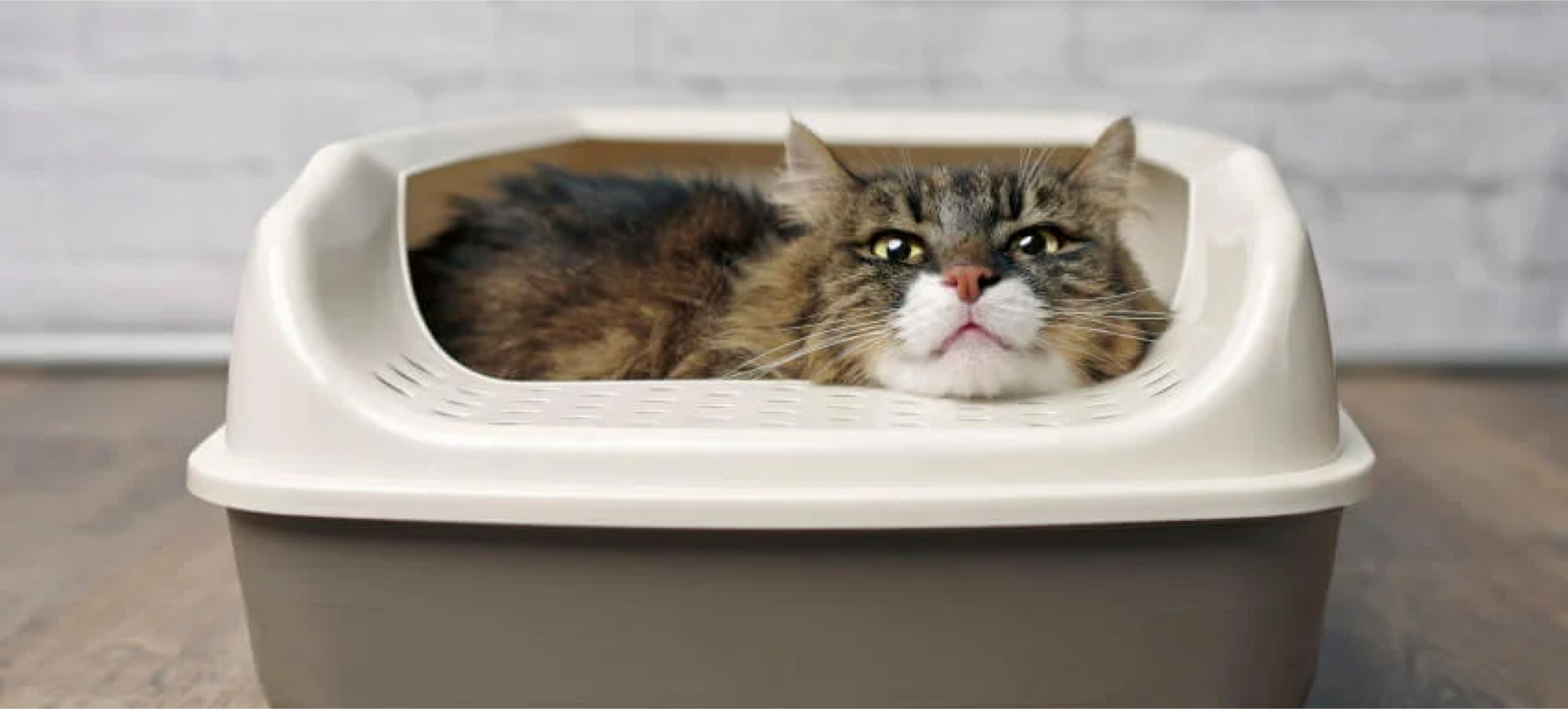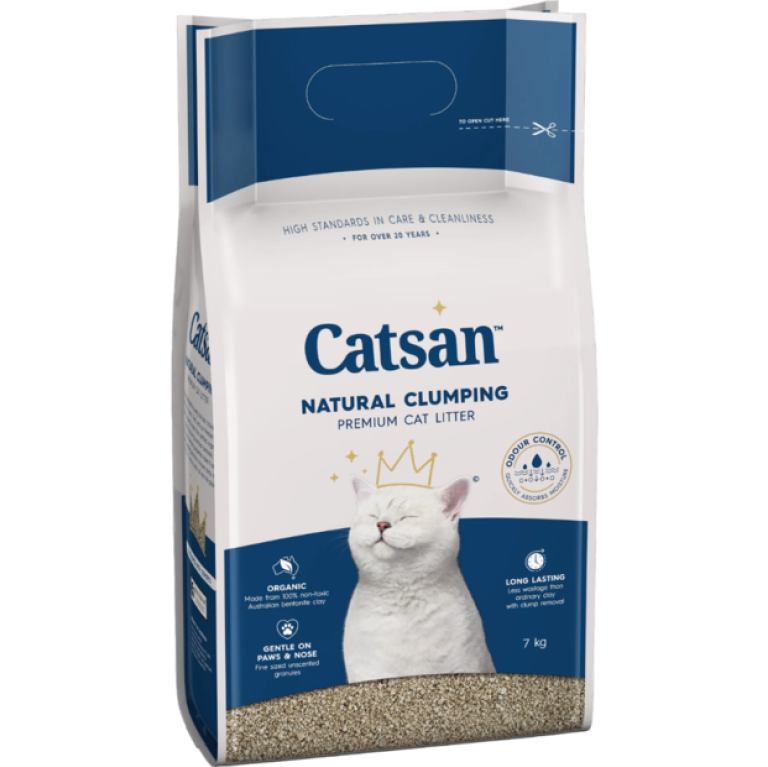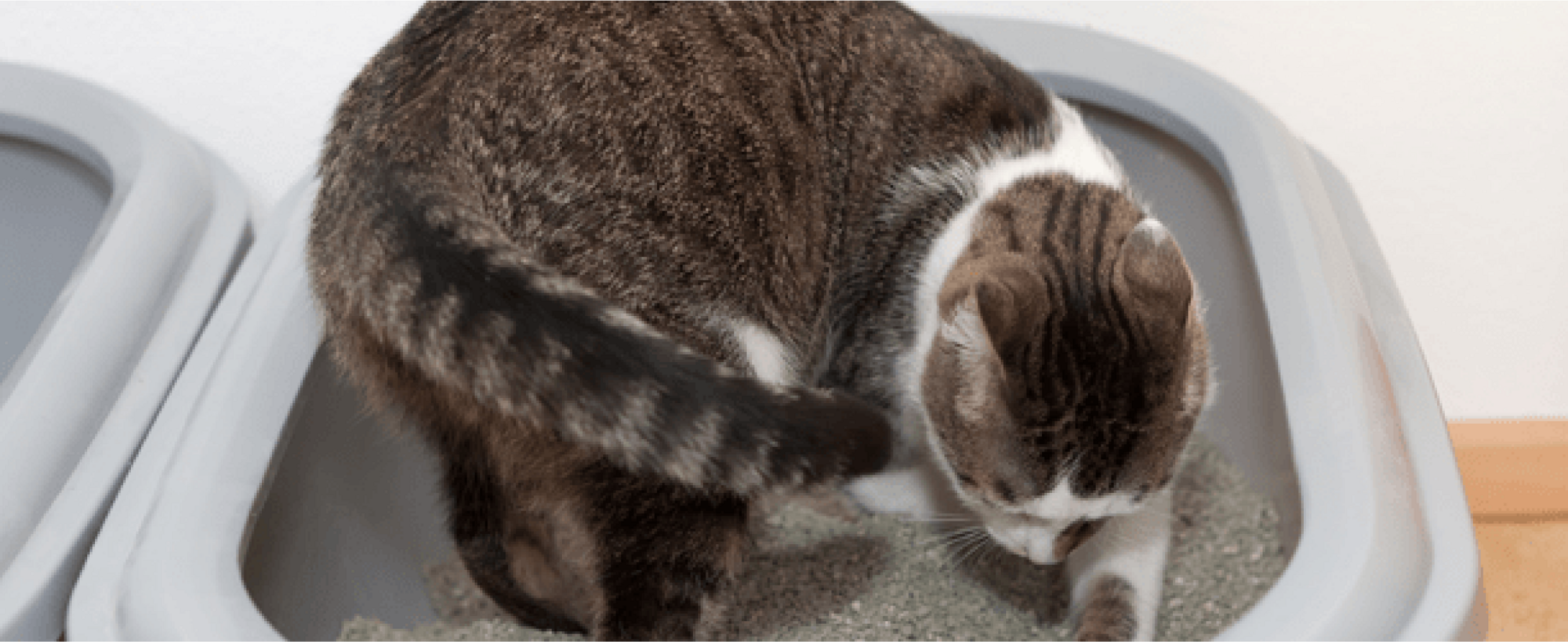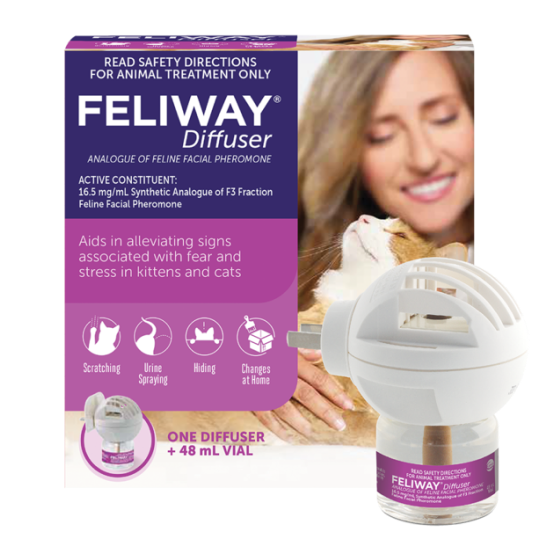Last Updated: 06/05/2025
How to Litter Train Your Cat
Read through our handy litter training guide to make sure your cat's litter training experience is as simple and stress-free as possible.
Author: Dr Jacqui Victor BVSc MANZCVS (Medicine of Cats)
Reading Time: 10 minutes - short read
Have you recently adopted a new feline friend, or are you wanting to transition your outdoor cat to an indoor lifestyle and are worried about how to go about the litter training process? Try not to worry as it's usually quite easy and straightforward thanks to cats' natural instincts. Have a read through our handy litter training guide to make sure your cat's litter training experience is as simple and stress-free as possible.
In this article, we'll discuss:
When to Start Litter Training
Kittens will usually start learning to use a litter tray around 4 weeks of age thanks to their mothers, and so the good news is that by the time you adopt your new feline friend they will likely already be toilet trained! If your kitty still needs a bit of a helping hand, then don't fear as litter box training is generally quite straightforward, and most cats pick it up quickly due to their cleanliness and natural instincts to cover their tracks after toileting. In any case, it's best to start getting your kitten into a routine with litter training as soon as they arrive home.
If your cat was formerly an outdoor cat then they can be a bit trickier to litter train, however their innate instincts should kick in quickly. To help ease their transition, you can initially use outdoor soil as your cat's litter substrate until they are used to going in the box, and then gradually increase the amount of cat litter and reduce the amount of soil until your cat is solely using the cat litter.
Each cat has their personal preferences when it comes to their toileting - including size, location and accessibility of their litter boxes as well as the type of litter. Ensuring your cat has their preference of litter box and litter type helps promote regular toileting habits, decreases stress and prevents the development of urinary issues.
Choosing the Perfect Litter Box and Placement

Each cat will have their own preference over the type of litter box they wish to use - whether it's hooded, open or extra-spacious (particularly for larger cats) - so you may need to experiment to see which your kitty prefers!
Make sure to choose a litter tray that is suited to the lifestage and size of your cat. For example, when selecting a litter tray for your new kitten, make sure it has low enough sides that are easy to access for little kitten legs. Of you are adopting an older, arthritic cat, be sure to use a larger tray with a lower entry lip so they can easily get in and out, and avoid purchasing a litter box that involves stairs. If you have a larger cat, make sure to grab a larger tray that is big enough for them to be able to comfortably fit and turn around in.
Make sure to place the litter trays in quiet areas, away from any loud noises such as washing machines, and in a separate location to their food and water bowls. Cats like to have choices of where to do their business. The ideal number of litter trays is "1 litter tray per cat, plus one extra" (eg if you have 2 cats then you would need to provide 3 litter trays in your home, ideally in separate areas). If you have multiple cats at home, make sure to place the trays in an area with 2 way access, as in some households one cat will block off the entrance to the box forcing the other to do their business elsewhere. If you have a multi-story home, it is important to have at least one tray per level.
The Poowee Cat Litter Tray has easy access for your kitten whilst still helping to contain litter scatter. It also comes in a variety of sizes to accommodate your kitten as they grow.
The SmartCat Corner Litter Box conveniently fits into corner spots in your home and has a low entry with high sides to avoid your senior cat kicking litter out.
This litter box features an extra wide design, making it perfect for large breed cats or multi-cat households. It is also designed to reduce litter box odours and ensure a quick and easy clean-up.
Selecting the Best Litter Type
Ask the shelter or breeder which type of litter and tray your kitten was previously using, so you can use the same ones when they come home. Selecting litter and trays that your kitten is already familiar with will make toilet training much easier and less stressful, and help ease your kitten's adjustment into their new home. You can always transition to a different type of litter later on once your kitten has settled in.
As kittens are naturally curious and may play or eat their litter, avoid using clumping clay or crystal litters as they can cause gastrointestinal issues if ingested. Tofu or paper litters are much safer options for kittens.
Clumping vs Non-clumping?
Clumping technology involves litter bonding with urine to form easy to remove clumps, and is available in a variety of materials such as clay, crystal, tofu, corn and wood. Generally, clumping litter is a bit more expensive than non-clumping, but is associated with easier daily clean-up and longer lasting litter, making the price difference less significant in the long-run.
There are a wide variety of litter substrates available nowadays, and it can definitely be overwhelming when deciding which is best for you and your cat! To help find your cat's preference, you can set up multiple trays each with a different type of litter to see which appeases them most. Most cats prefer unscented clay litter, and so is a safe place to start if you're unsure.
Litter type
Clay
Many cats prefer clay litter as it is similar to soil or sand that cats use in the wild, so if you are unsure which litter type to use - unscented clay litter is a good place to start. Clumping clay litter is made from natural bentonite clay which rapidly absorbs liquids for easy removal of waste. The downsides to clay litter are that it is less environmentally friendly and is associated with increased litter tracking, and is typically more dusty.
Crystal
Crystal litter is made from silica gel, which is highly effective at absorbing moisture and unpleasant odours. Crystal litter involves less frequent cleaning and less litter tracking, however is not as environmentally friendly as other types of litter. Crystal litter is not suitable for young kittens who may eat their litter, as it can be toxic when ingested.
Tofu
Tofu litter is one of the newest types of cat litter available, made from natural soybean fibre. It is a popular litter as it is plant-based, environmentally friendly and biodegradable. It's also a gentle litter material, making it a perfect choice for kittens.
Corn
Corn litter is another popular and environmentally friendly litter option that is biodegradable, absorbent and provides high odour control. It is important to keep the bag well sealed, as unsealed bags can let in moisture which can lead to the development of toxic mould.
Paper
Paper litter is made from recycled newspapers and is eco-friendly, safe and scent-free. Keep in mind though, that not all cats will use paper litter as some don't like the texture and feel of it.
Wood
Wood litter is made from recycled wood pine and is eco-friendly, compostable and biodegradable. It is well known for its natural pine scent which helps to control odours.
To find out everything you need to know about the best litter type for your feline friend, have a read of our comprehensive guide: A Complete Guide to Cat Litter.
Breeder's Choice is a great choice of litter for kittens as it's made from recycled paper making it light, cost effective and highly absorbent.
Oz Pet Animal Pine Wood Litter is an environmentally friendly, non-clumping litter that is highly absorbent and safe for kittens.

Catsan Ultra is a great choice for adult cats and is classic clay litter that forms tight clumps for easy removal of liquid waste, whilst also offering excellent odour control.
Litter Box Hygiene

Cats are very clean creatures, so it's important to ensure their litter boxes are kept clean at all times! Ensuring your cat always has clean litter encourages them to toilet regularly and also prevents them from searching for other inappropriate areas in your home to do their business, creating unwanted smells throughout your home. Having clean toileting areas also helps decrease stress, which is a known risk factor for many urinary issues in cats.
Make sure to scoop out wastes at least once to twice a day. Clumping litter can make this task easier, and make sure to have a sturdy scoop nearby!
Each specific litter type and brand will have its own recommendations regarding frequency of changing, however a good general rule is to completely empty, clean and replace the litter at least once a week to help remove any stubborn smells. Wash out the box with a mild detergent, then rinse and dry thoroughly before replacing with fresh litter. Litter should be at least 2-3 inches deep, to ensure your cat can properly cover their waste and the urine can be completely absorbed.
Replacing your cat's litter boxes once a year can also help keep your cat's box smelling fresh. Plastic litter boxes can get damaged over time as your cat scratches the bottom, and these small grooves can retain odour. Using litter liners can help slow down this process, as well as making your clean up process much quicker.
In multi-cat households, you will need to do more frequent scoops and litter changes depending on the number of cats you have as well as their toileting frequency.
This scoop allows for efficient and easy litter tray cleaning, and is available in a variety of stylish colours.
This odour destroyer uses a triple action formula to break down unpleasant odours, rather than just masking them.
Rufus and Coco Litter Liners help make your litter tray clean-up a breeze.
Introducing your Cat to the Litter Box

First of all, patience is key. Moving into a new home is already stressful enough for your new feline friend, and they have a lot to learn and explore so this all takes time. This is particularly so for kittens, as they are only young and still learning. Patience and consistency are vital to ensure the success of your cat's toileting routine.
First, decide on your litter box location and have it set up ready to go before your kitten or cat arrives. It's a good idea to confine your new kitty to a restricted area of the house and place their litter box in there. This will help ease their transition into their new home. Make sure to show them the box as soon as they arrive home, and make sure not to move it to avoid confusion!
Introduce your kitten to the litter tray by placing them in there, and allow them to sniff and explore it. Gently place your kitten in their litter box at times when they will most likely need to toilet, including after they wake up, or after eating/drinking and after playtime.
When your kitten does use their litter tray, make sure to reward them to reinforce this positive behaviour! Once your kitten has finished toileting, give them some praise and a treat, or a toy to play with.
Keep an eye out for signs that your cat is wanting to use the toilet - such as sniffing the floor and quickly running behind the sofa. If you catch your cat in or near the act, pick them up and place them in the litter, then give them some privacy to do their business, and make sure to reward them after.
Make sure you always keep your cat's litter box nice and clean, as this way they are more likely to return to the tray.
It usually takes days to weeks for a new kitten to become fully toilet trained (if they are not already when you adopt them!), though every cat is different. As long as you're patient and positive, and have all the right tools, rest assured your feline friend will be a pro in no time!
Common Training Challenges
Accidents may happen during the toileting training process, and if your kitten goes to the toilet in the wrong place, it is best to ignore it - remember, never to punish your kitten for toileting inappropriately as this is not only detrimental to the bond between you two, but may actually delay their learning process. Simply clean the soiled area thoroughly with an enzymatic cleaner which neutralizes the odour and also reduces the likelihood of your cat using that place to toilet again.
Urine Off is useful for cleaning little accidents and preventing lingering odours.
As mentioned above, cats can be quite particular about the conditions in which they're willing to toilet, and if your cat doesn't seem to be adapting to toilet training then run through this troubleshooting checklist as your cat may not like:

The type or size of the litter box (remember kittens and older cats may have difficulty getting in and out of the tray)

The type, texture or smell of the litter

The location of the litter box

Not having enough trays available

The level of cleanliness of their litter trays
Remember, you may need to experiment until you find the right combination of factors to appease your kitty!
Stress and anxiety are common causes of toileting troubles, and as mentioned before, moving into a new environment can be stressful in itself. Feliway is a great way to help reduce anxiety in cats, particularly when they are settling into their new homes. Feliway has been shown to reduce signs of stress in cats including urinating outside the litter box.

Feliway helps to reduce symptoms of stress in cats, including urinating outside the litter tray.
If you have adopted an adult cat and they are not desexed, this can contribute to inappropriate urination. Desexing your cat can have a positive impact on inappropriate toileting if they are doing so for reproductive or territorial reasons, and has several other health benefits as well.
If you are still struggling with toilet training your cat with the above measures, please consult with your veterinarian to rule out any underlying health issues.
Further Reading
Want to know more? Check out some of our other articles:
How to Prevent Urinary Issues in Cats
Feline Lower Urinary Tract Disease (FLUTD)
Reducing Stress and Anxiety in Cats